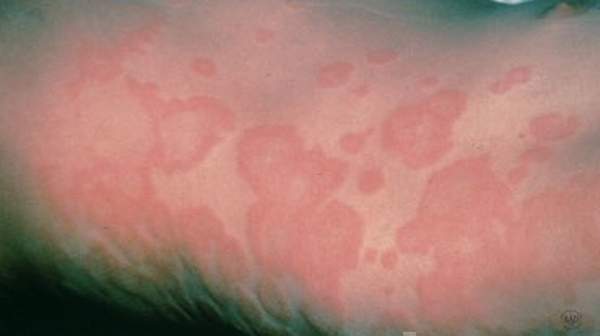What's in this article?
Characteristic of Hives?
Hives usually cause itching, but may also burn or sting. They can appear anywhere on the body, including the face, lips, tongue, throat, or ears. Hives vary in size (from a pencil eraser to a dinner plate), and may join together to form larger areas known as plaques. They can last for hours, or up to one day before fading.
Chronic Hives
also known as urticaria, are batches of raised, red or white itchy welts (wheals) of various sizes that appear and disappear. While most cases of hives go away within a few weeks or less, for some people they are a long-term problem. Chronic hives are defined as hives that last more than six weeks or hives that go away, but recur frequently.
Angioedema
is a form of hives, but the swelling occurs beneath the skin instead of on the surface.
Angioedema is characterized by deep swelling around the eyes and lips and sometimes of the genitals, hands, and feet. It generally lasts longer than hives, but the swelling usually goes away in less than 24 hours.
Rarely, angioedema of the throat, tongue, or lungs can block the airways, causing difficulty breathing. This may become life threatening.
Hives generally:
- Appear as small round wheals, rings or large patches and may change shape
- Itch and may be surrounded by a red flare
- Occur in batches, and often appear on the face or the extremities
Individual hives can last from 30 minutes to 36 hours. As some hives disappear, new hives may develop.
About 40 percent of people with chronic hives also have angioedema. Signs and symptoms of angioedema include large welts or swelling of the skin that may occur around the eyes and lips, hands, feet, genitalia, and inside the throat. Swelling in the throat can obstruct breathing and requires emergency treatment. Angioedema may itch less than hives do, but can cause pain or burning.
Symptoms may not occur all the time. They may come and go with no apparent trigger. For some people, certain conditions such as heat, exertion or stress can make symptoms worse.
Acute urticaria
Hives lasting less than six weeks. The most common causes are certain foods, medications, or infections. Insect bites and internal disease may also be responsible.
The most common foods that cause hives are nuts, chocolate, fish, tomatoes, eggs, fresh berries, and milk. Fresh foods cause hives more often than cooked foods. Certain food additives and preservatives may also be to blame.
Drugs that can cause hives and angioedema include aspirin and other nonsteroidal anti-inflammatory medications such as ibuprofen, high blood pressure drugs (ACE inhibitors), or painkillers such as codeine.
5 Types of Rare Skin Conditions – Related Article
Chronic urticaria and angioedema
Hives lasting more than six weeks. The cause of this type of hives is usually more difficult to identify than those causing acute urticaria. For most people with chronic urticaria, the cause is impossible to determine.
Chronic urticaria and angioedema can affect other internal organs such as the lungs, muscles, and gastrointestinal tract. Symptoms include muscle soreness, shortness of breath, vomiting, and diarrhea.
See your doctor if you have:
- Severe hives
- Hives that don’t respond to treatment
- Hives that continue to appear for several days
Seek emergency care if you:
- Feel lightheaded
- Have difficulty breathing
- Feel your throat is swelling








